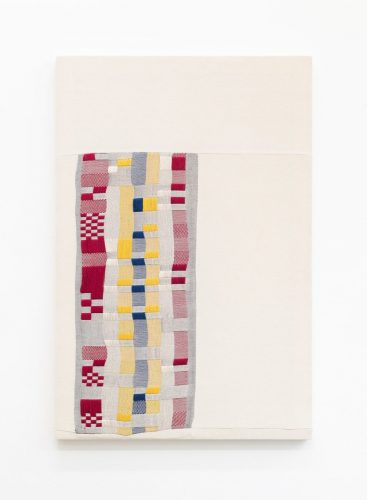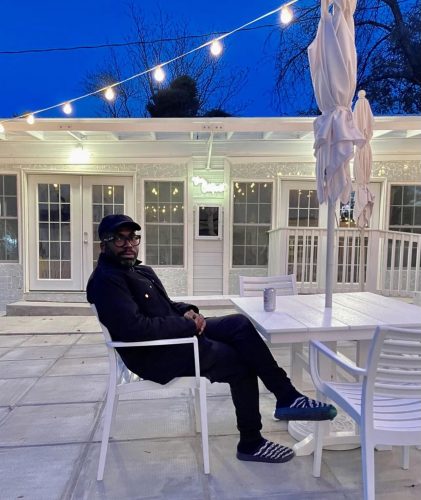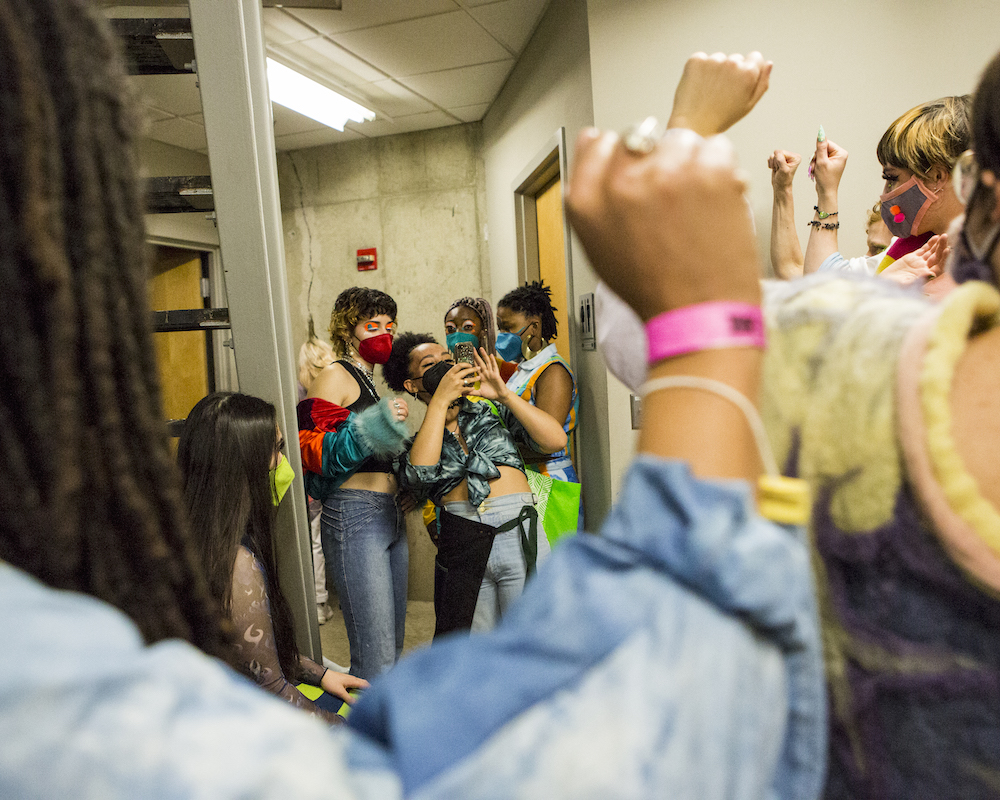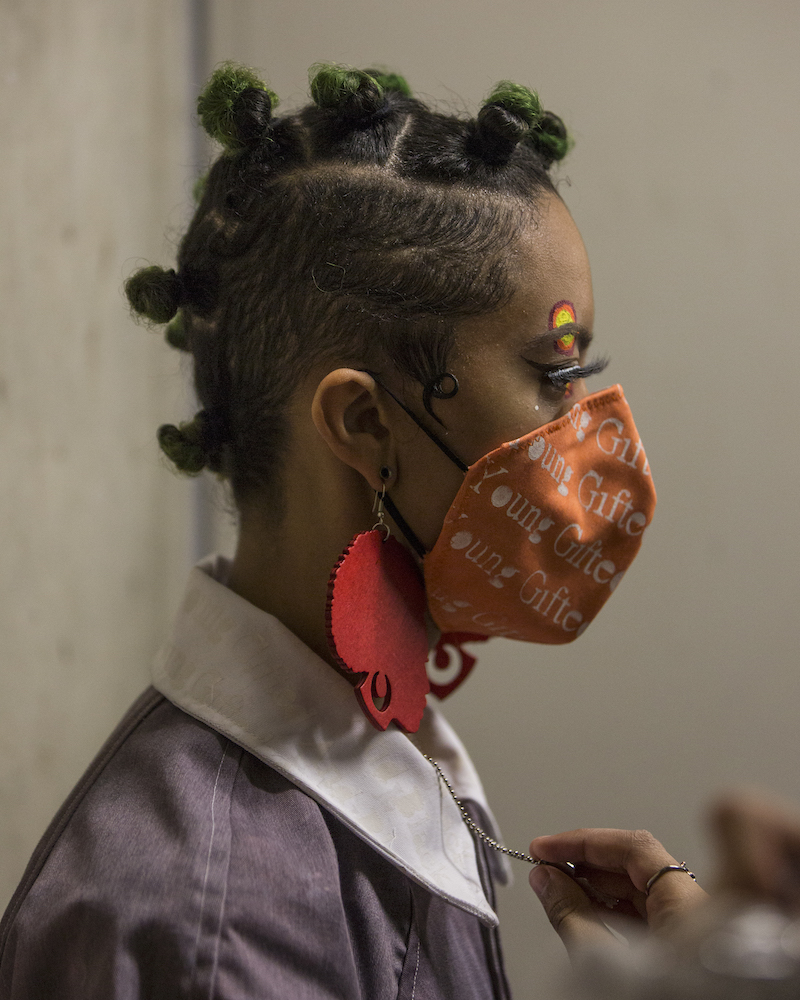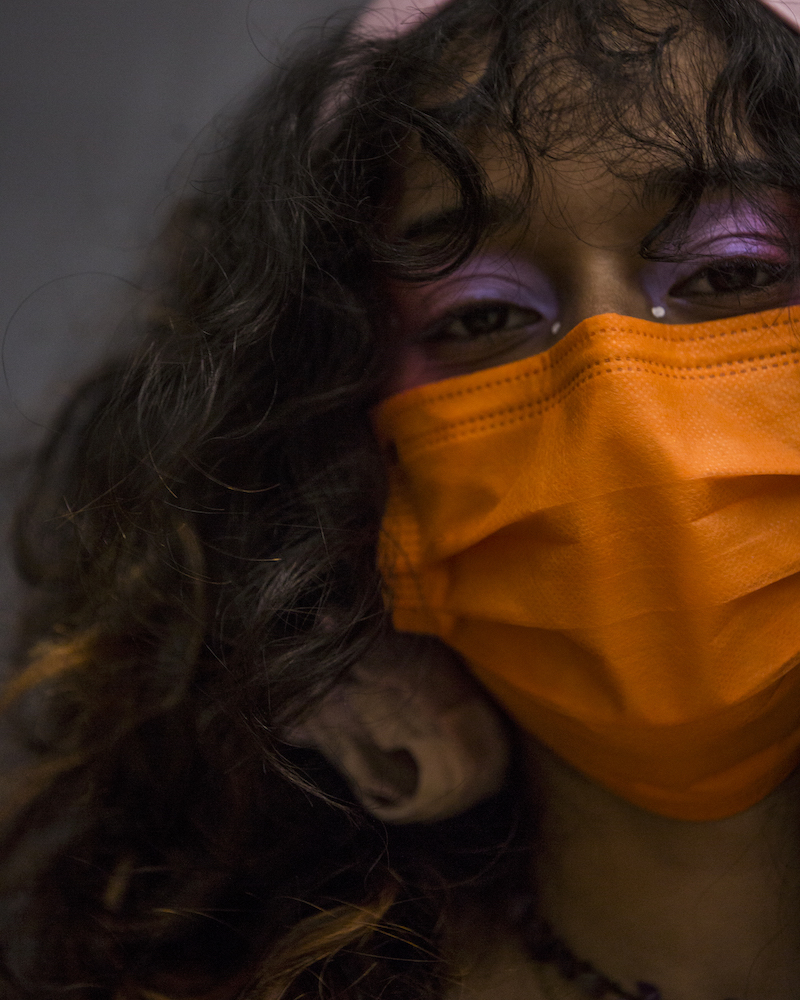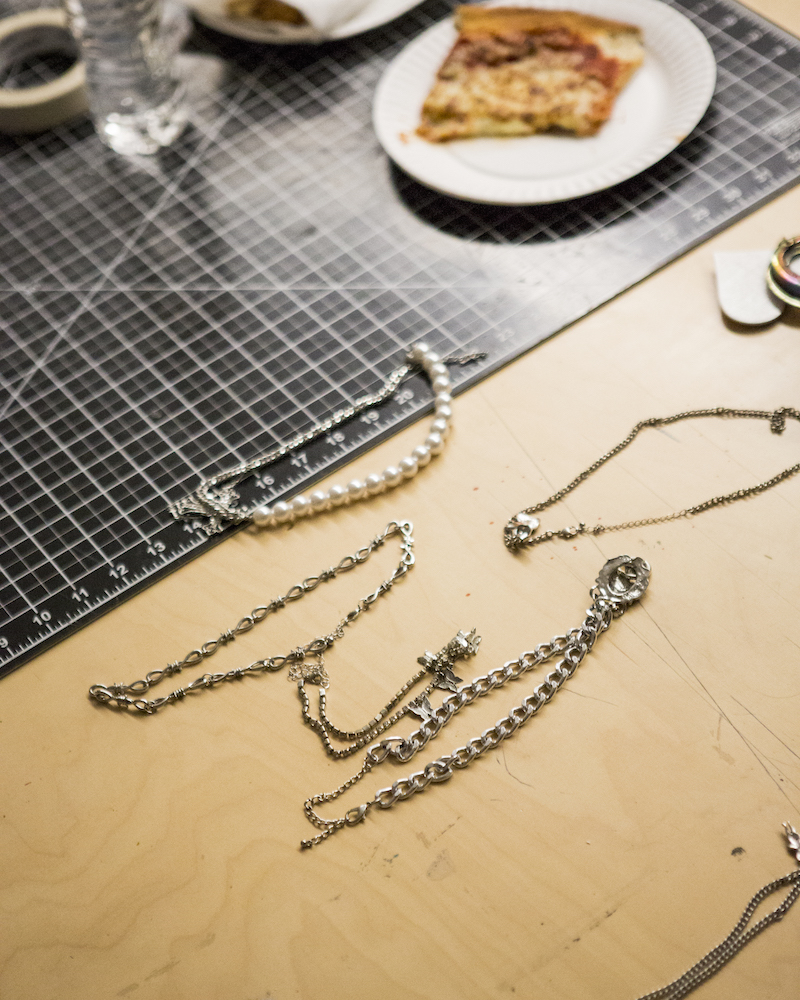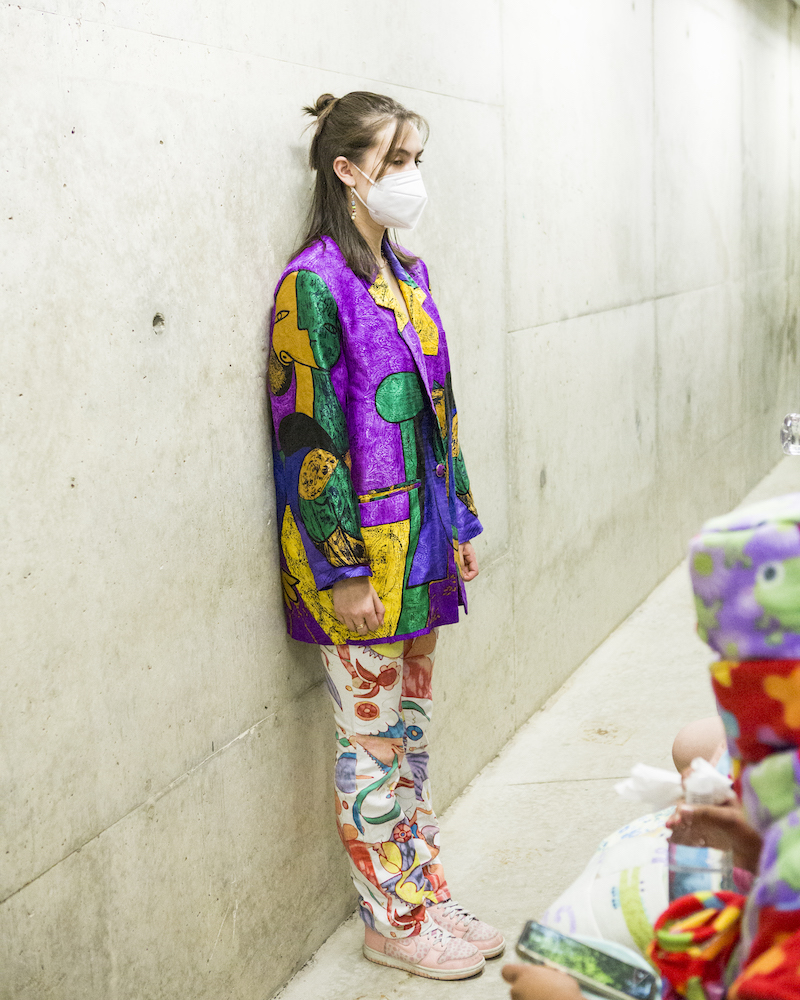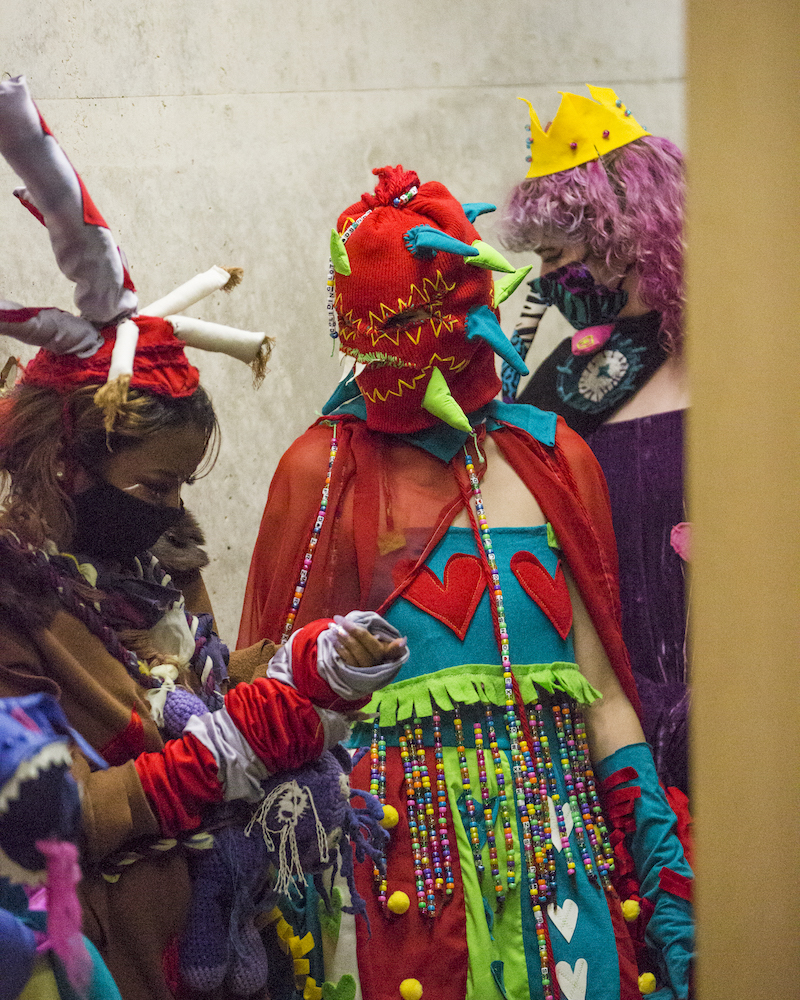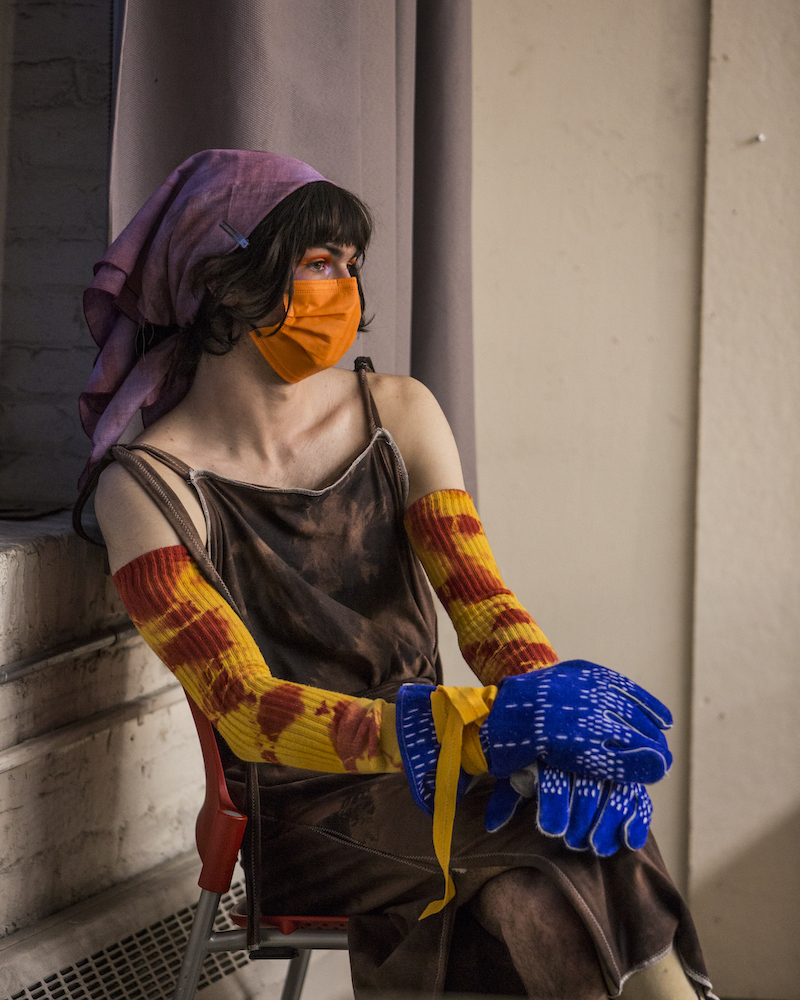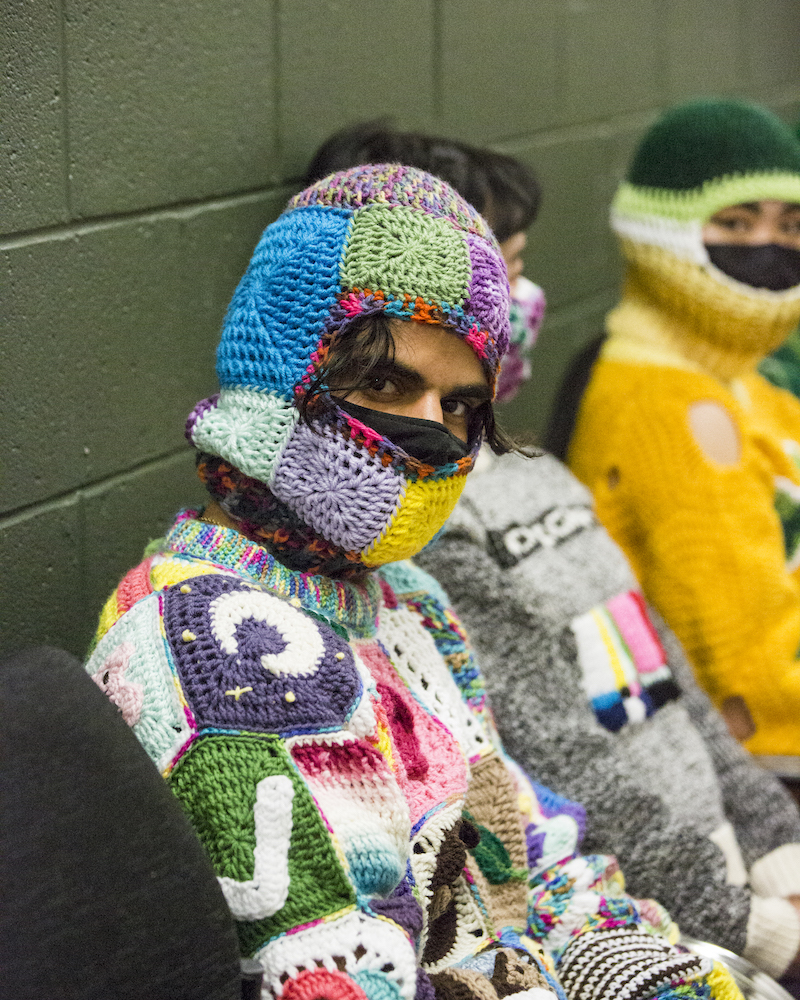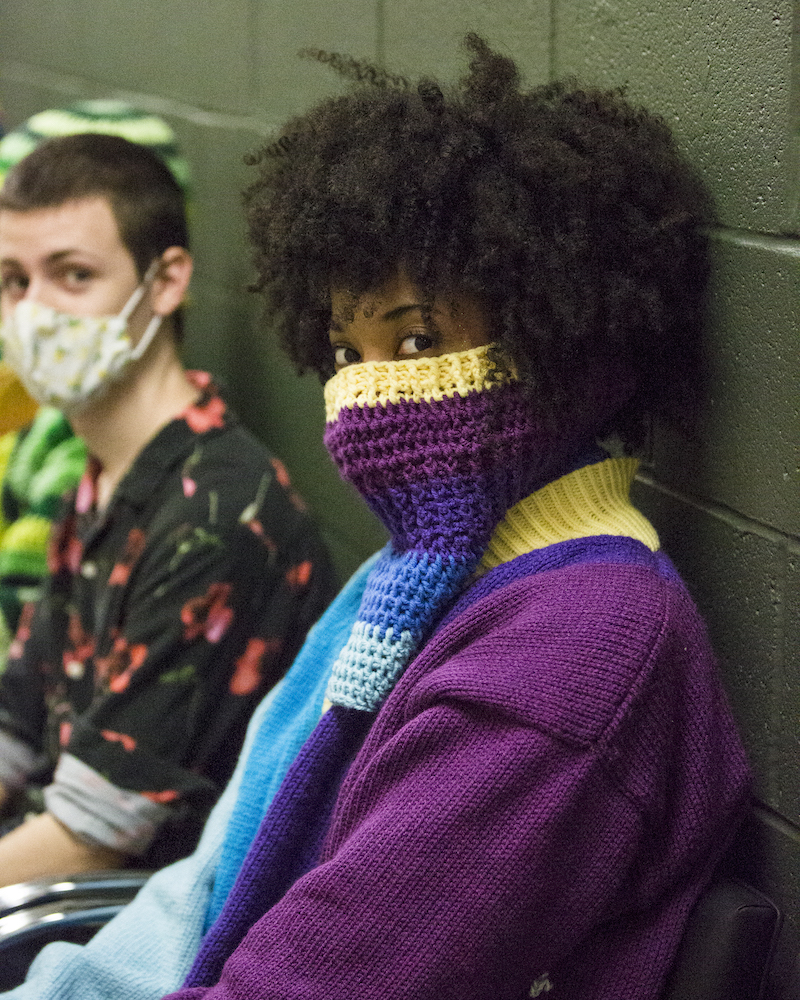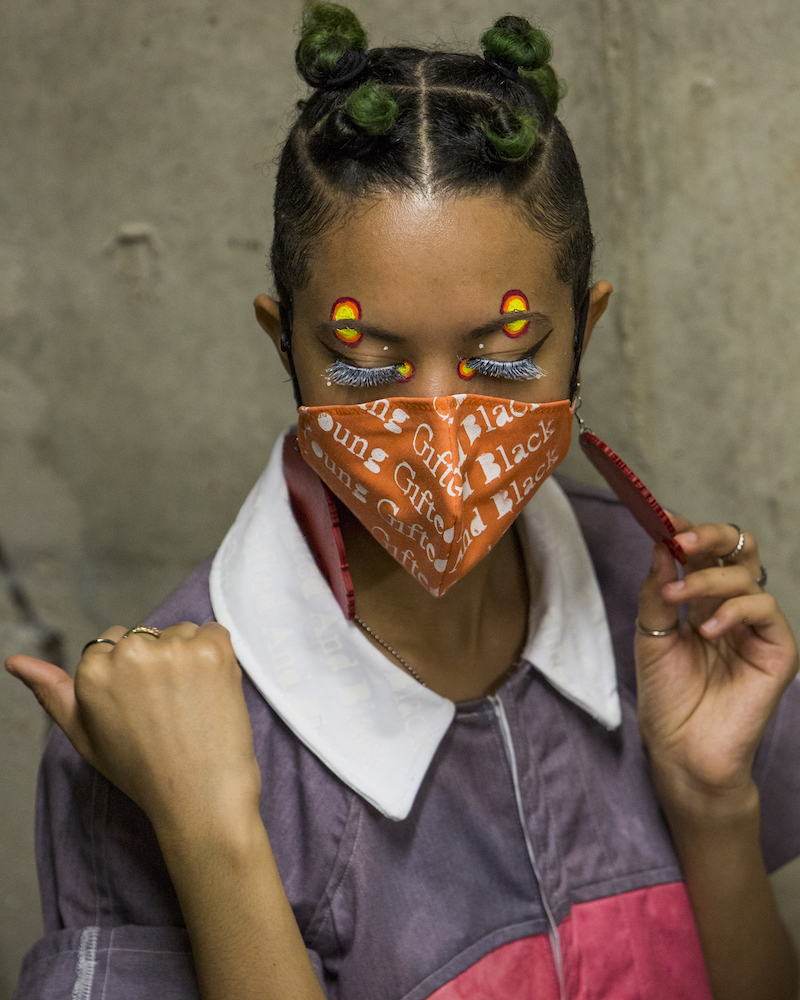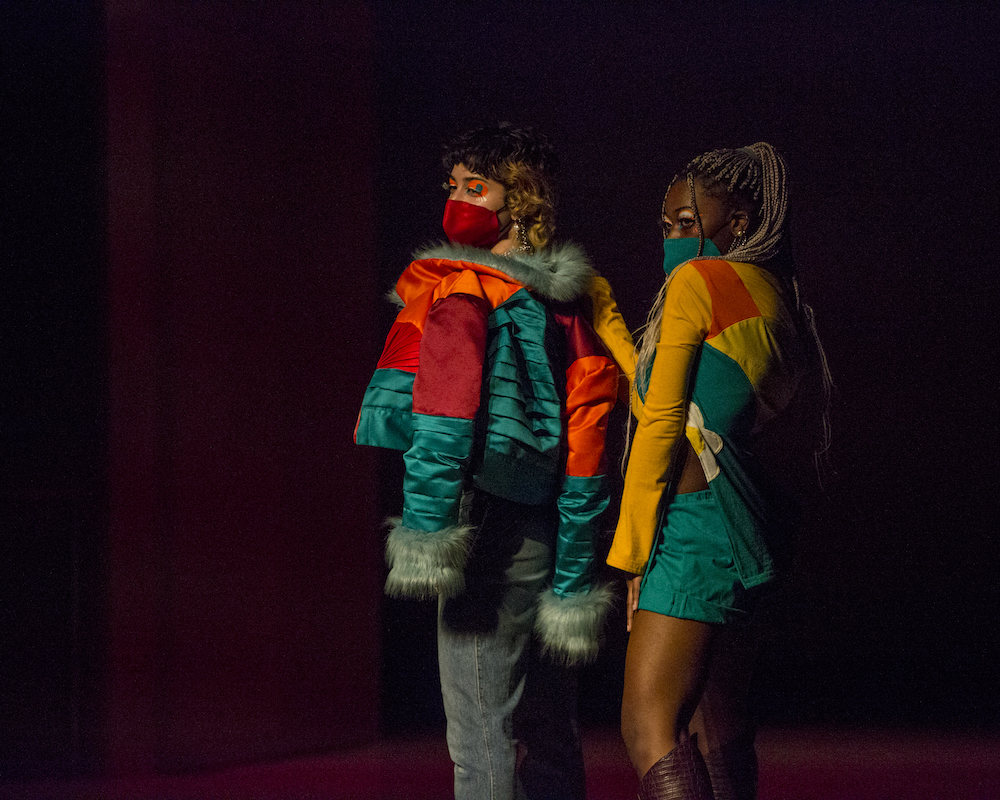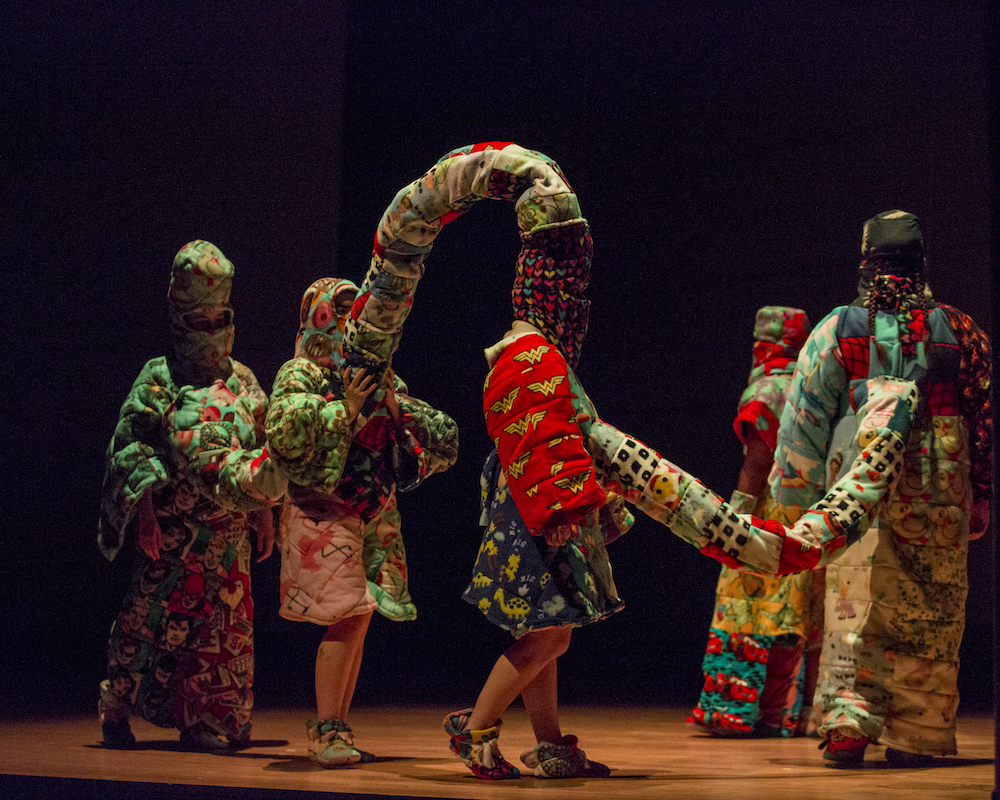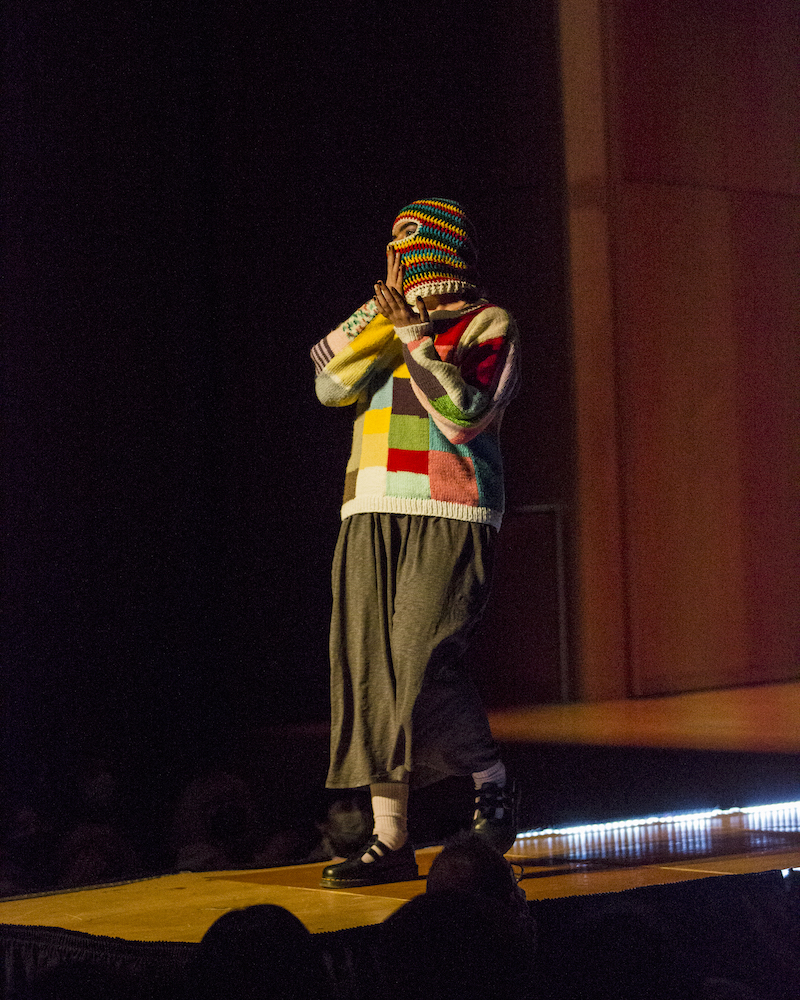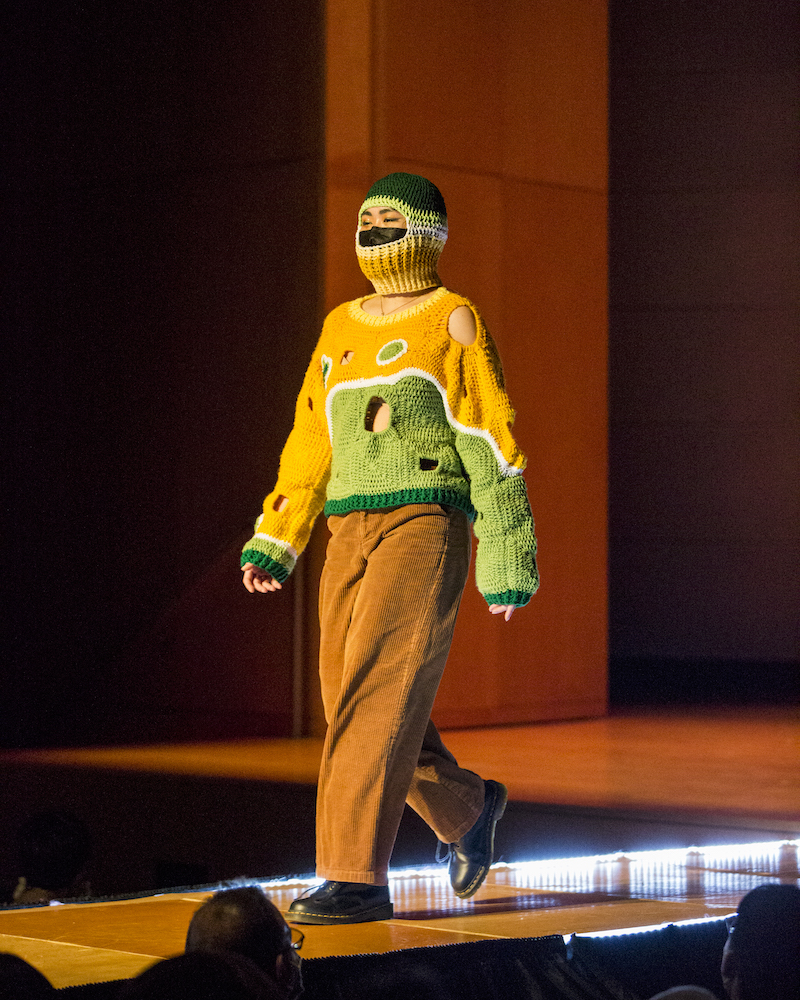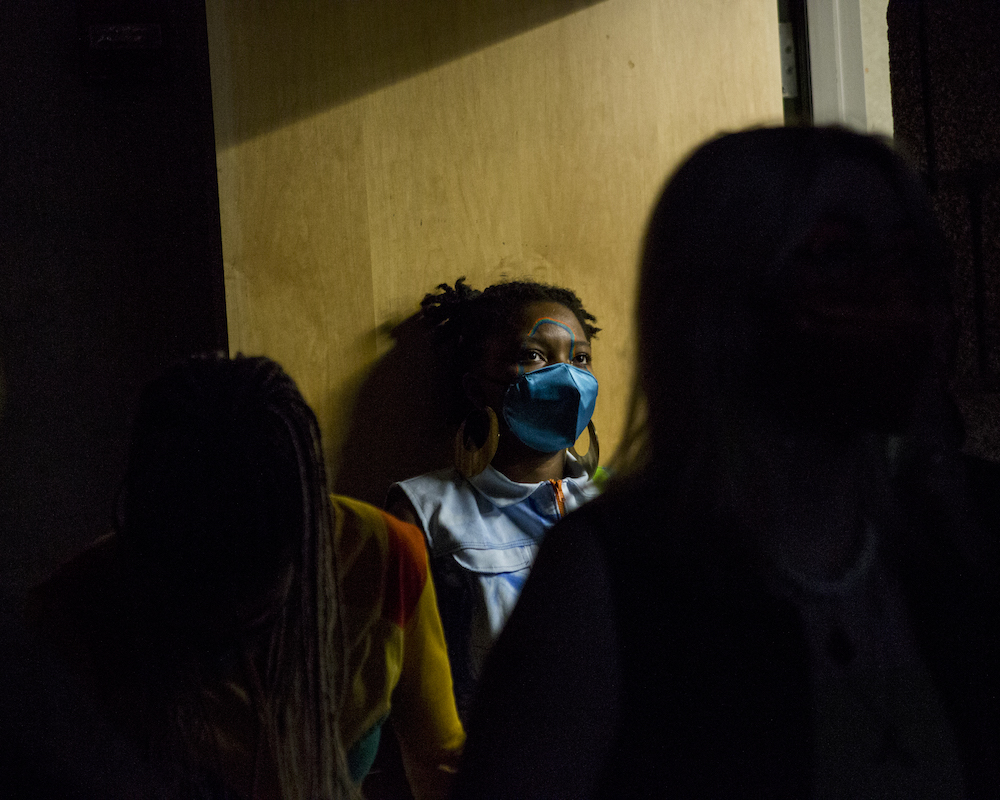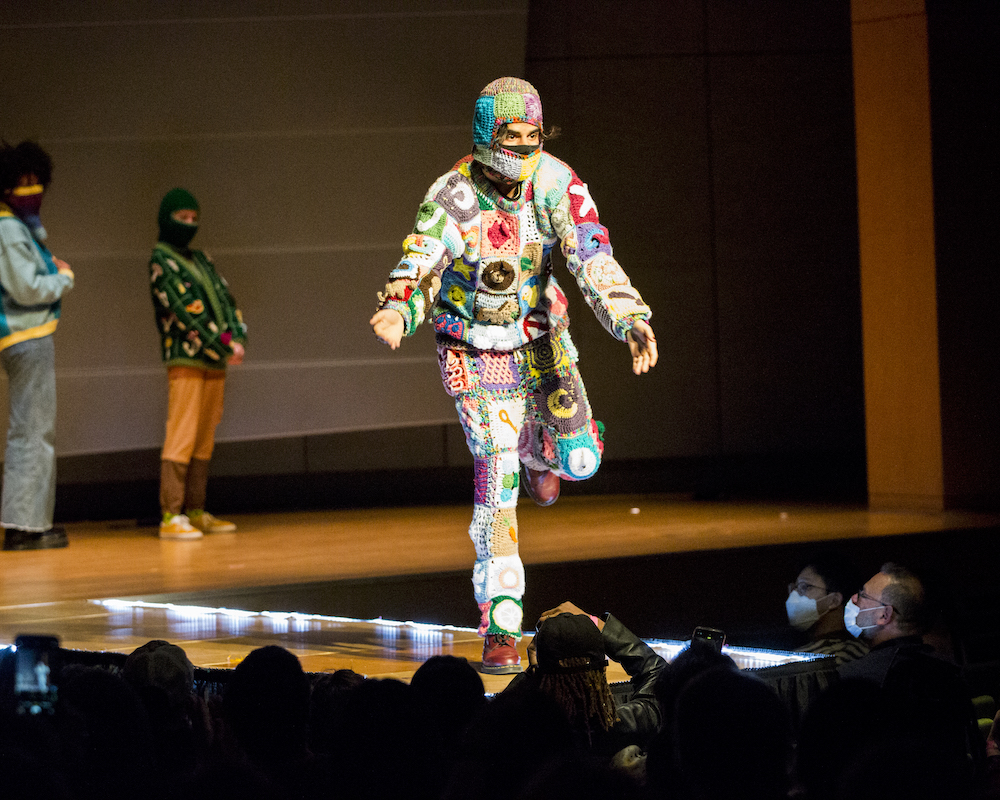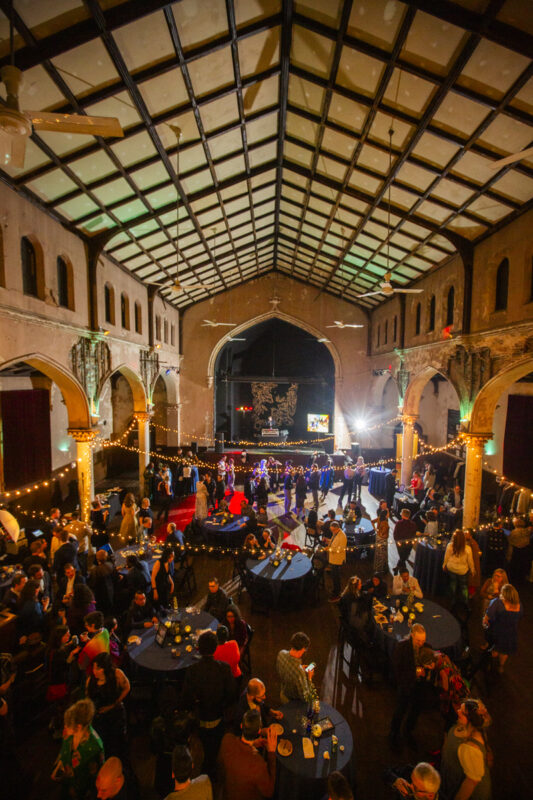That’s incredible. How has participating in the fashion show changed how you feel about wearable art or clothing?
CE: Before this fashion show, the only sort of fiber work that I had done would be cutting up random shirts and collaging them together. So I feel like this was my introduction into wearable art and it has exploded my mind. Now I have a million ideas. I want to make all this sculptural art, all this wearable art. I am super invested in that now as an idea. Whereas beforehand I was like, oh yeah, I’ll do this fashion show. We’ll see how it goes.
ARJ: I would say before the fashion show, I was definitely limiting myself in terms of things that I thought I would be able to sell and making garments that people would be interested in purchasing as a way to sustain my practice. But after seeing the beautiful variations from Venus’s perfectly sewn garments to Cassidy’s insane fun explosion of ideas, I think I’m now seeing the possibilities of how far things can be pushed through wearables. I learned that you’ll always be able to find the people that are into just what you’re doing if you’re authentic. So you should stop being so focused on what would be marketable and make what feels authentic to you.
VS: The fashion show has made me more confident in my abilities because I can make clothes, we can do all the designing and the behind the scenes stuff. But there’s organization I needed to learn, I have time slots for all my models for when to show up to get their makeup done. I’ve never done stage cues before. The aspect of how to be an organized person, that’s what has been the most terrifying thing for me. They teach you how to make the art, they teach you how to be confident with your direction, but there’s less instruction on how are you should actually organize your time and how are you going to make this a doable thing?
The Benefit show made me realize it’s not as scary as it seems. To what Alec was saying, seeing the amount of diversity in work that people are doing is very inspiring. Apollo, one of the other designers, brought in a whole dance team for his collection. Kris made a giant 14-feet-high puppet head and then Cassie and Alec, their work just slaps and gives me this big brain explosion moment. It makes me really happy to see the diversity of work that can be done within the realm of fiber.
There’s a real human element to the fashion show. As an observer of the show over the last five years, it just seems like this is an event that people get really excited about and are really happy to participate in. The joy is palpable.
ARJ: The energy in the show this year has been super noticeable. Seeing people getting so hype for it is really beautiful to see. I think Mary Song and Achmad O’Brien and our directors this year have just done an insane job with the social media postings and hyping everyone up in the community to come and see the show. And it’s just really beautiful to see the support that we have.
CE: I was going to say a similar thing about the energy. It’s insane. Every time for the past, honestly months, I open my phone, every single click is Amplify, Amplify, Amplify. This is the biggest event that MICA’s had publicly since the pandemic so it really is an opportunity for everyone to get back together. Some of the designers are having our friends be the models so it’s just a big party at the end of the day. We’re all just hanging out. We’re just performing, having fun. It’s just so great.
VS: Most of my pieces I made during the pandemic and because my immune system is crap, I couldn’t get anyone to model for me so I made the pieces to fit myself. As a result, all of my pieces are my size and my friends are not all my size, so I had to find new models. When I put out the model call to the MICA community, I had eight people show up for me that I did not know at all. We’re a little family now. It makes me so happy because everyone is sweet and so kind and we all get along with each other. We’re probably gonna have a picnic after this.
Is there anything else you feel like you want to say about the show or your work?
ARJ: Despite outside perception, the show is not fiber department specific and it really does encapsulate so many other departments like graphic design and the photo department. Inter-department collaboration is such a big part of putting this on.
VS: I also it’s important to remember that this is all extracurricular. We’re all full-time students who probably also have jobs. Everyone in this show has committed so much time to making it so beautiful. I think that aspect is really important because it just shows the determination of the models, the designers, of the student tech teams, the graphic design students, everybody decided they were going to do this for the love for fashion. There’s a love for expressing ourselves through this mode.
CE: For me personally, I’m a GFA major. So that means I’m gonna make a video, I’m gonna make music, I’m gonna make looks, I’m gonna make a performance. I’m gonna do it all. It was a really good opportunity to get my fingers in everything. Now I know how to make a cue sheet, I know how to direct lighting. Now I know how to organize all these people and I think it really speaks to the MICA community as well. The amount of people that are involved is astronomical. It is super cheesy, but it’s super unifying to see.
